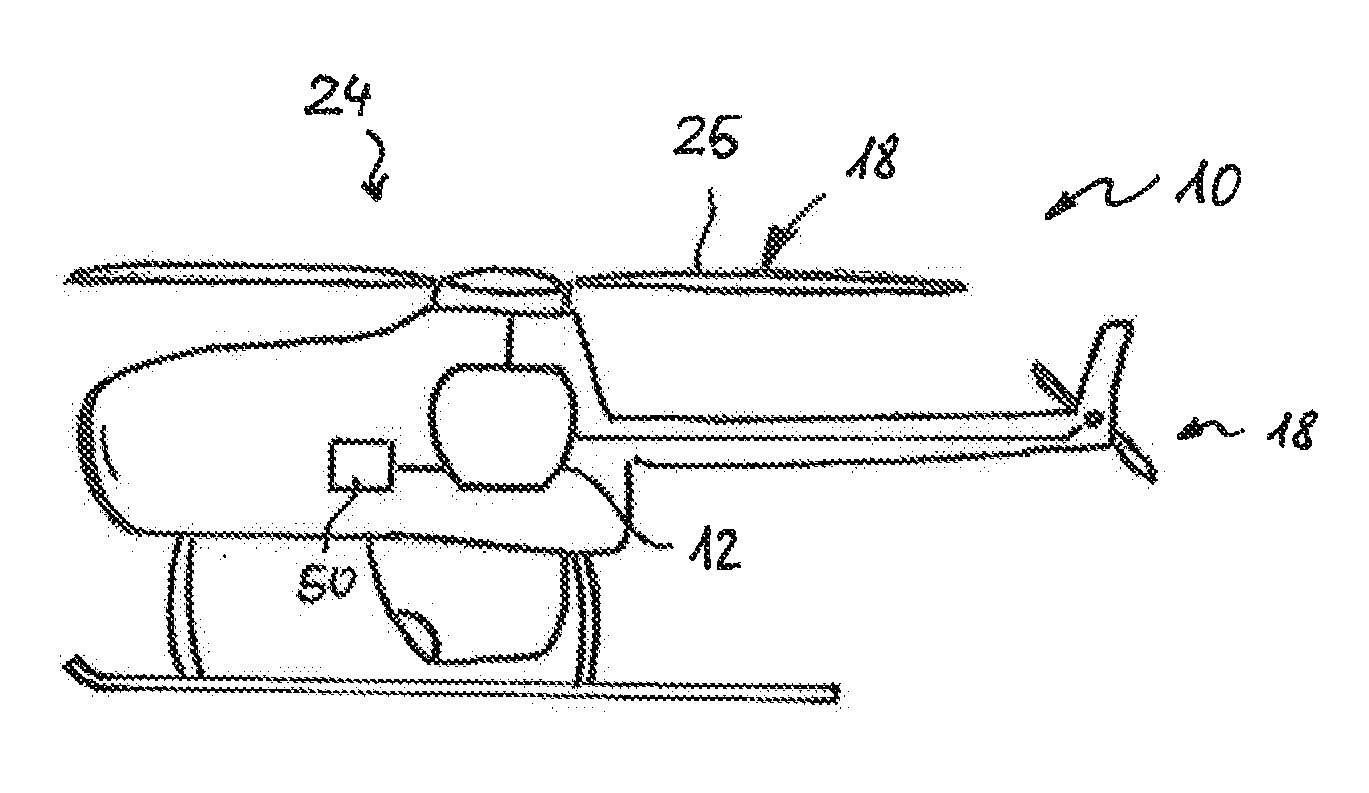Unmanned Aircraft and Operation Method for the Same
a technology of unmanned aircraft and operation method, which is applied in the direction of efficient propulsion technology, machines/engines, transportation and packaging, etc., can solve the problems of low power and low flight time, low storage density of contemporary batteries, and high cost of rotary piston engines, and achieves the effect of low power
- Summary
- Abstract
- Description
- Claims
- Application Information
AI Technical Summary
Benefits of technology
Problems solved by technology
Method used
Image
Examples
first embodiment
[0093]FIGS. 4 to 7 illustrate a first embodiment for the propulsion 12, with a single-stage charging, wherein only the first charger 52 is depicted, in the form of the exhaust gas turbocharger 54 with the compressor 56,C and the first exhaust gas turbine 58,T connected to the compressor 56. The internal combustion engine 28 and the electrical machine 34 can optionally be connected to the output shaft 62 and thus to the thrust generator18 via the first coupling 46 and the second coupling 48.
[0094]The propulsion 12 thus includes the internal combustion engine 28, which may be configured as a diesel engine and as a Wankel engine and is provided with a charging system in the form of the charger device 30 having the compressor 56 and the first exhaust gas turbine 58. The engine output shaft 64 can be connected to the thrust generator 18 via the first coupling 46. The generator 38 and the electric motor 36 or—as depicted here—the electrical machine 34 able to operate as a generator G or a...
third embodiment
[0109]FIGS. 12 to 17 illustrate the hybrid propulsion 32, as an example of the propulsion 12 for the UAVs 14, 24, 26, wherein identical or corresponding elements bear identical reference numerals as in the first two embodiments and reference can be made to the above statements for further details.
[0110]In this third embodiment, the charger device 30 is configured for switchable multi-stage charging and comprises the first charger 52 and a second charger 70 for providing the multi-stage charging, wherein the different chargers 52, 70 can be switched on or switched off under the control of the controller 50 in order to switch the different stages of charging on or off.
[0111]In the third embodiment of the hybrid propulsion 32, at least one electric motor 36,M and one generator 38,G are represented here in place of the electrical machine 34, which can operate in both the electric motor operation and the generator operation. The coupling device 44 comprises the first coupling 46 for coup...
PUM
 Login to View More
Login to View More Abstract
Description
Claims
Application Information
 Login to View More
Login to View More - R&D
- Intellectual Property
- Life Sciences
- Materials
- Tech Scout
- Unparalleled Data Quality
- Higher Quality Content
- 60% Fewer Hallucinations
Browse by: Latest US Patents, China's latest patents, Technical Efficacy Thesaurus, Application Domain, Technology Topic, Popular Technical Reports.
© 2025 PatSnap. All rights reserved.Legal|Privacy policy|Modern Slavery Act Transparency Statement|Sitemap|About US| Contact US: help@patsnap.com



